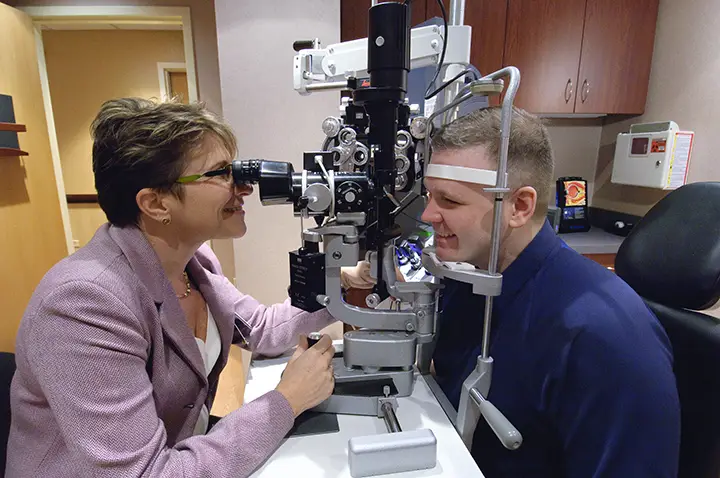Is LASIK Safe? Are There Any Risks and Complications?
LASIK eye surgery is widely regarded as a safe and painless procedure that has helped millions of people improve their vision. Most patients experience a significant improvement in their vision almost immediately after the surgery.
However, like any medical procedure, LASIK is not completely without risks. It is important for potential candidates to be aware of these possible complications:
- Dry Eyes: One of the most common side effects after LASIK is dry eyes. This condition may be temporary or persistent, and it can usually be managed with lubricating eye drops.
- Halos and Glare: Some patients may notice halos or glare around lights, particularly at night. This effect can diminish over time but might be permanent in some cases.
- Undercorrection or Overcorrection: There is a possibility that the laser removes too little or too much tissue from your eye, leading to undercorrection or overcorrection of your vision. This might require additional surgery or the use of glasses or contact lenses.
- Vision Changes or Loss: In rare cases, patients may experience a loss of vision quality. The vision could become worse than it was before the surgery, and this might not be correctable with glasses, contact lenses, or additional LASIK surgery.
- Flap Complications: The LASIK procedure involves creating a thin flap in the cornea. Complications related to the flap, such as improper healing or infection, though rare, can occur.
- Regression: Some patients may experience a gradual return of their original refractive error over time, a phenomenon known as regression. This may require a follow-up LASIK procedure to achieve the desired vision correction.
Which Is The Best Hospital For Lasik Eye Surgery
Under the guidance of Dr. Shweta Jain, EyeMantra stands out as a premier choice for LASIK surgery in India, offering a combination of expert care, advanced technology, and patient-centric services. Here are some reasons why EyeMantra is the ideal place for your LASIK procedure:
- Free Surgery Consultation: We offer a free consultation to discuss your vision needs, the LASIK process, and any questions you may have, ensuring you make an informed decision.
- Laser Painless Procedure: Our state-of-the-art LASIK technology ensures a virtually painless experience. The precision of our laser systems minimizes discomfort and promotes a smoother, quicker recovery.
- EMI / Cashless Facilities: EyeMantra provides easy EMI and cashless payment options, making the treatment accessible without financial strain.
- Free Post Surgery Consultation: We provide free post-surgery consultations to monitor your recovery and ensure your vision is progressing as expected.
- Dedicated Care Companion: Every patient is assigned a dedicated care companion who will guide you through the entire process, ensuring a personalized and supportive experience.
- Most Affordable Surgery: We are committed to offer top-quality care at the most affordable prices (Rs. 10,000), making advanced LASIK surgery accessible to a wider audience.
At EyeMantra, we combine expert surgical skills with compassionate care to ensure that your journey to clearer vision is smooth and stress-free. Choose EyeMantra for a safe, effective, and satisfying LASIK surgery experience.
How Many Days of Rest is Required after LASIK Surgery?
Typically, patients do not require extensive downtime after LASIK surgery. Most individuals can resume their routine activities within a day or two. However, it is crucial to avoid strenuous activities and environments that are dusty or could lead to eye irritation during the first week following surgery. Your doctor will provide specific guidelines based on your individual recovery.
How Long Does it Take To Fully Recover From LASIK?
While the initial recovery from LASIK is relatively quick, with most patients noticing significant improvements in their vision within 24 to 48 hours, the full recovery process can vary. It generally takes several weeks to a few months for your vision to stabilize and achieve optimal clarity. Follow-up appointments will be necessary to monitor your progress and ensure proper healing.
Is It Okay To Have Blurred Vision After LASIK Eye Surgery?
Yes, it is normal to experience some blurred vision immediately after LASIK surgery. This is part of the healing process, and your vision may fluctuate slightly as your eyes adjust and heal. This blurred vision generally improves within a few days, but it may take several weeks for your vision to fully stabilize. If you experience persistent or worsening blurred vision, it is important to consult your eye surgeon to ensure that your eyes are healing properly.
Conclusion
So, if you’re considering LASIK surgery to correct your vision, it’s essential to choose a trusted and experienced provider. EyeMantra offers top-notch LASIK surgery, combining advanced technology with personalized care to ensure the best outcomes for our patients.
Take the first step towards clearer, sharper vision. Contact us at +91 9711116605 to book your free LASIK consultation today.

